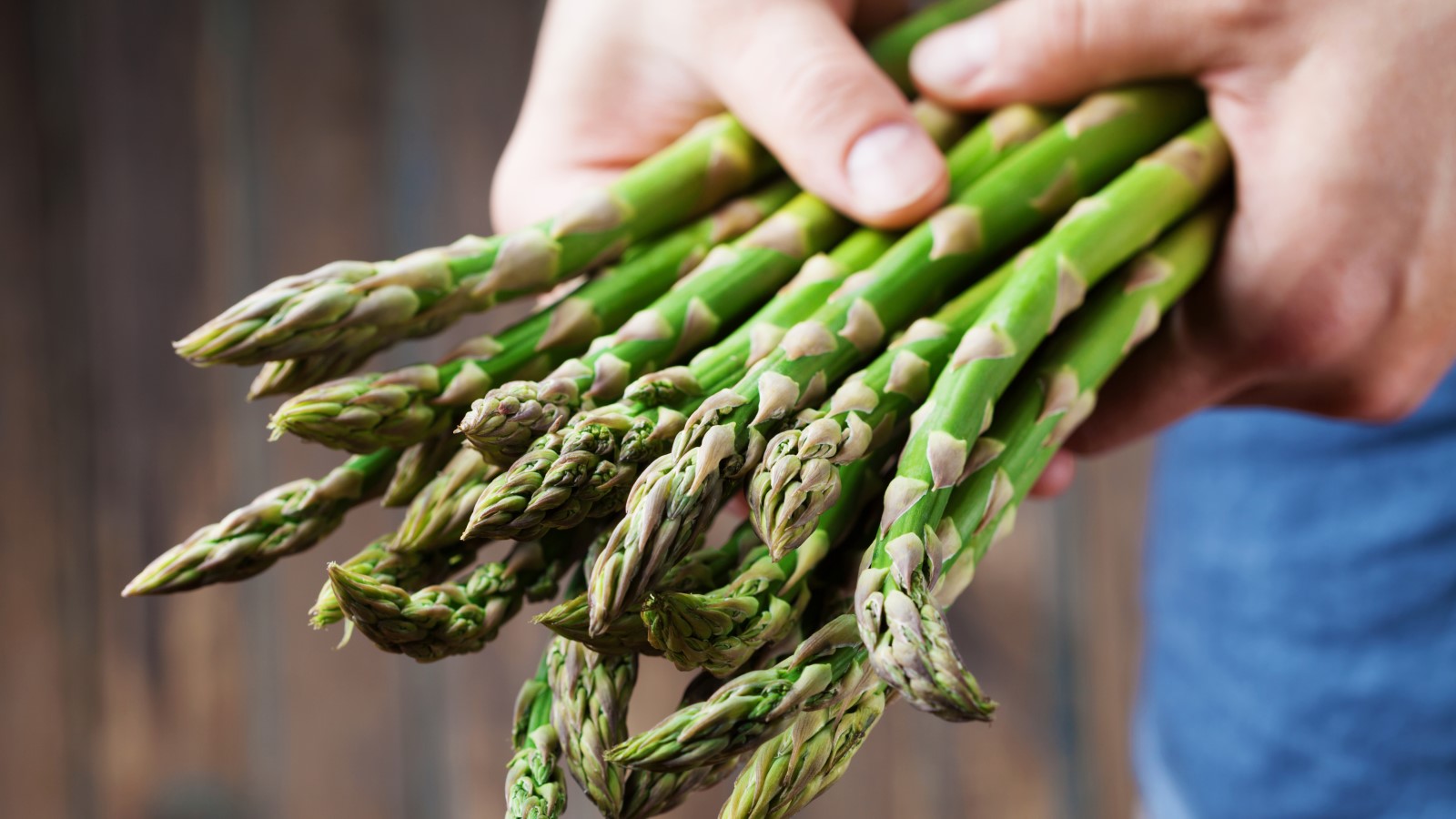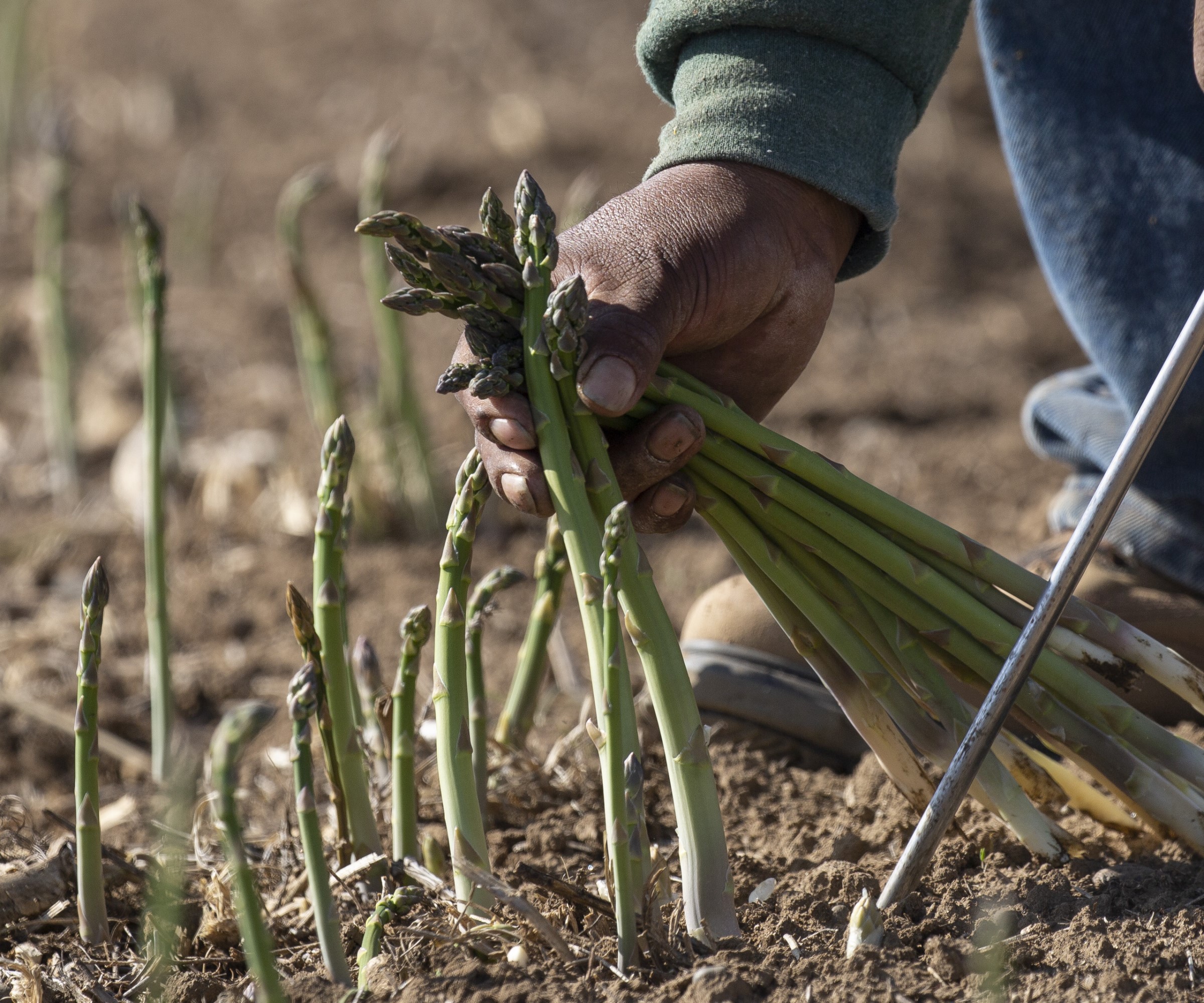Growing asparagus from cuttings – expert tips on how to do it
Discover how to propagate new asparagus using the spears from your existing crowns


Asparagus is a crop that requires patience, taking at least two years from planting to being able to harvest any spears during its all-to-brief season in spring.
Knowing how to grow asparagus means you can have a delicious harvest in your yard. The perennial plant is simple to grow and can potentially provide you with tasty and tender spears for up to 20 years.
So what do you do if you want more asparagus? There is always the option to buy more crowns, divide your existing ones, or grow more plants from seed. These are the traditional routes to go, or you can discover if there is a potential to grow asparagus from cuttings.

Asparagus is harvested with a sharp knife just below the soil

Drew is a former professional gardener who has worked in several kitchen gardens across the UK. He specialized as a grower of vegetables, fruit, and herbs, growing edibles for chefs at high-level restaurants and also to sell to the public.
Can you grow asparagus from cuttings?
There has been asparagus in most of the kitchen gardens I have worked in and it was always a hugely-popular crop with chefs I grew for. I have planted asparagus crowns, divided crowns, and grown asparagus from seed – however I have never grown asparagus from cuttings. In truth, it is not something I have commonly heard being attempted, but that does not mean it cannot be successfully done.
Division of established crowns is the preferred method as you know the plant has a healthy root system already, and you won’t have to wait many years to be able to start cropping. Even if growing asparagus from cuttings is possible, I imagine it will take at least three years to go from taking the cutting to harvesting any spears. If you are planning a kitchen garden and want asparagus, then planting crowns would still mean a wait, but shorter than from seed or cuttings. A lot of time and care must go into the process of caring for the cuttings as they grow – and if they grow. A key part of maintenance includes knowing when to fertilize asparagus to ensure they grow into healthy and strong crowns.
While I may be new to the concept, there are many people out there who say it can be done and see it is a potentially successful way of propagating new asparagus plants. While seemingly plausible as a method, it does appear to come with some risks.

Asparagus stores better when the stems are placed in water
Stacie Krljanovic, a head groundskeeper in Houston, TX, claims that growing asparagus from cuttings ‘can be done’, however warns it can be ‘more difficult and can take longer’ than other forms of growing asparagus, such as from crowns or division.
She explains: ‘Asparagus cuttings can be taken from the new growth or ferns of an established plant. The cuttings should be about 6 inches long and have at least one node or bud. They can be planted in pots or directly in the ground.’
David Cohen, the CEO of Flower Station, describes the process as ‘not the most reliable’ method of growing asparagus, especially compared to division. ‘However, if you do want to try growing asparagus from cuttings, make sure to take them from the base of healthy, mature plants and plant them in a well-draining soil mix.”
Susan Anderson, Lead Editor at The Worthy Goods, says it is a ‘fantastic way’ to propagate asparagus, adding: ‘You can use either young, green shoots or mature stalks. While using young shoots is faster, mature stalks can also work if you take good care of them.
‘However, growing asparagus from store-bought stalks isn't recommended because they're often treated with chemicals and may not produce the same quality of asparagus as plants grown from cuttings.’
Jeremy Yamaguchi, CEO of Lawn Love, adds: ‘You can certainly grow asparagus from cuttings, and it’s quite common to do so. You can start your cuttings in water or in soil, and it’s usually best to do this indoors before transplanting them outside.'

Asparagus is a spring delicacy from March till June
How to grow asparagus from cuttings
Another advocate for growing asparagus from cuttings is Zeeshan Haider, CEO and founder of Greenry Enthusiast, who says that it is a technique with the potential to be ‘much easier and more efficient’ than other forms of propagating asparagus. Zeeshan offers some asparagus growing tips for how to propagate from cuttings:
- Find a healthy asparagus plant. It's important to select a plant with a strong root system and healthy shoots
- Cut off some of the stalks, taking care to make sure that each cutting is at least 10 inches long and contains at least three nodes
- Choose a spot in your garden that receives full sun and has well-draining soil
- Dig a hole that is 8-10 inches deep and fill it with a mix of compost and soil
- Place the cuttings into the soil and cover with a few inches of soil
- Water well and allow the cuttings to take root
- It can take a few weeks for the cuttings to establish a healthy root system. During this time, it's important to keep the soil moist but not soggy
An alternative method is to submerge asparagus stalks in a container of water and place this in a bright and warm spot, but out of direct sunlight. Change the water every two or three days and wait for sprouts to emerge out of the stalk. Once these sprouts get a few inches tall then it is time to transplant the stalk into the soil. Many crops can be sprouted in water - for example it is quick and simple to grow lettuce from scraps in water - though asparagus is not one you commonly hear grown in water on a windowsill.

Asparagus comes in purple-topped or white varieties as well as the traditional green
Traditional ways to propagate asparagus
Asparagus is commonly grown by purchasing crowns from reputable retailers that you can plant in your vegetable garden. The crowns tend to be one-year-old, however such crowns would not be harvested for a further two years after planting. It is a crop that can successfully propagate from seed, sown in modules in late winter. Growing from seed is the most budget-friendly way to grow asparagus, however it means waiting that extra year to get a first harvest of spears.
Asparagus crowns are ideally suitable to divide to make more plants for your yard, or to make new crowns as part of ideas for a vegetable container garden. This is a task that should be done in either late fall after the ferns have died back, or in late winter or early spring. This can help rejuvenate crowns and create new clumps of asparagus - though the plants from the division will need at least a year to establish before producing a crop.
Carefully lift the selected crowns out of the ground and take a close look at the tangled crown of roots to see where best to make your split. The crown should be able to be prised apart gently using your hands - however if it is unduly tangled then a sharp knife may be needed to trim the roots. Ensure that each piece of the crown that you cut has got a good section of roots attached and a number of growing points.
FAQs
Can I grow asparagus from store bought asparagus?
It is not recommended to grow any vegetables from their store-bought counterparts, this includes potatoes, garlic, onions, and asparagus. Firstly, most vegetables that are imported are treated with chemicals to make them last longer and inhibit them sprouting, so may not ever grow if they are planted. The other main reason is that these vegetables may unknowingly contain diseases that could risk other plants in your yard if they were planted. Even if the vegetables are classified organic, there is still no guarantee they are not harbouring diseases.
Will asparagus spread on its own?
Asparagus plants do spread as they grow and therefore need to be given plenty of space when they are planted. The crowns need to be spaced 12 to 18 inches apart and, once established, will quickly spread to fill all the space. If maintained correctly, asparagus plants can provide a harvest for up to 20 years.
Growing asparagus from cuttings appears a viable, yet potentially lengthy and risky, method of propagating new crowns for your vegetable garden. Though if a crown can supply you with asparagus for up to two decades, then it could be worth the wait. And there would be real satisfaction from knowing you are enjoying stalks from a plant that you grew from a cutting. While growing asparagus from cuttings is certainly not the conventional norm, it might be worth an experiment.
Sign up to the Homes & Gardens newsletter
Design expertise in your inbox – from inspiring decorating ideas and beautiful celebrity homes to practical gardening advice and shopping round-ups.

Drew’s passion for gardening started with growing vegetables and salad in raised beds in a small urban terrace garden. He has worked as a professional gardener in historic gardens and specialises in growing vegetables, fruit, herbs, and cut flowers as a kitchen gardener. That passion for growing extends to being an allotmenteer, garden blogger, and producing how-to gardening guides for websites. Drew was shortlisted for the New Talent of the Year award at the 2023 Garden Media Guild Awards.
-
 Plants never to grow next to fruit trees
Plants never to grow next to fruit treesExpert advice on which plants to keep away from fruit trees to encourage a healthy harvest
By Jacky Parker Published
-
 Martha Stewart's tips for arranging daffodils are unbelievably simple and effective – it's the only flower advice you need this springtime
Martha Stewart's tips for arranging daffodils are unbelievably simple and effective – it's the only flower advice you need this springtimeMartha shows us that we can create gorgeous bouquets of this seasonal flower by simply trimming the stems and placing them in specific vases
By Hannah Ziegler Published